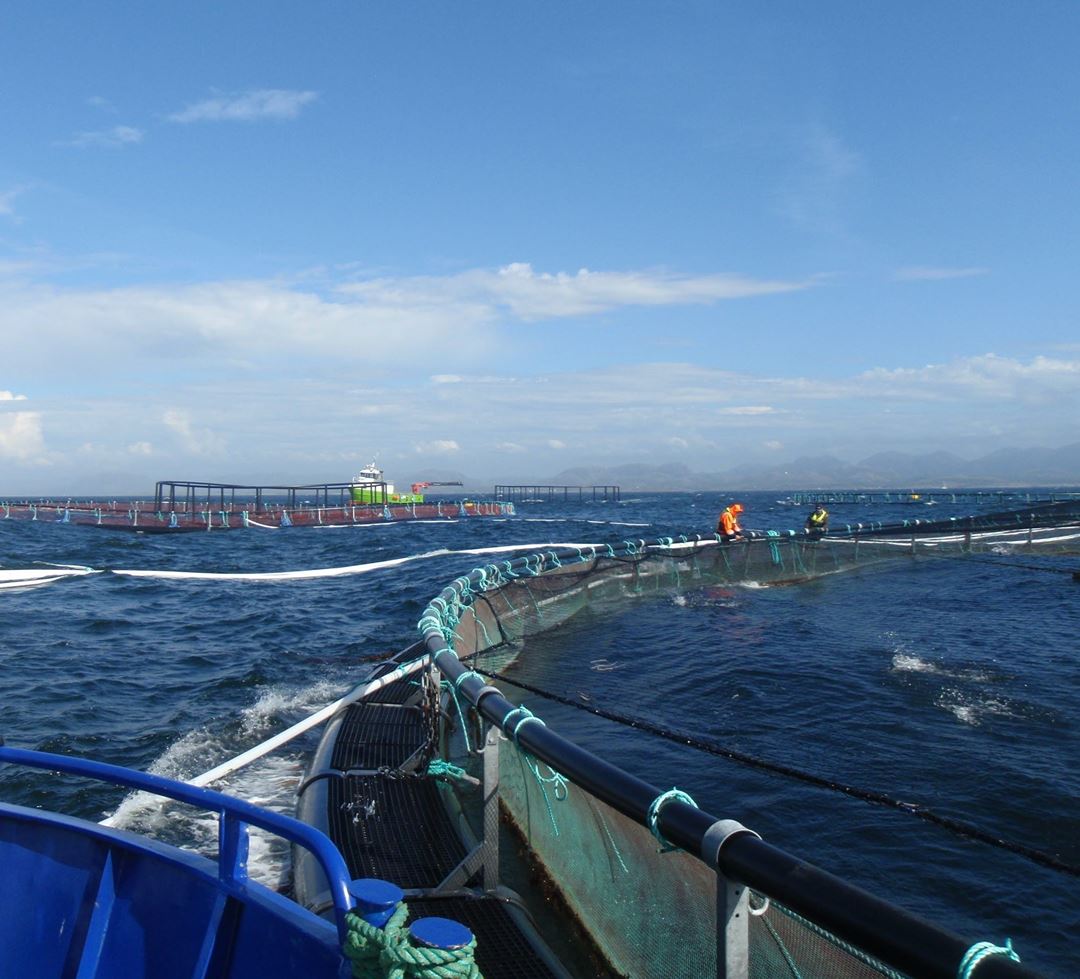The project Safer operations and workplaces in fish farming provides knowledge about health, safety and work environment for employees at fish farms, of safety management and suppliers role for development of technology that improves safety and work environment. The project shows how risks can be reduced. The aim is to ensure a safe work life for employees in the industry.
To assess employees' perceptions of health, work environment and safety a survey has been conducted amongst employees at fish farms and service vessels. The OHS-survey in aquaculture (in Norwegian) (Thorvaldsen et al. 2017) with answers from almost 447 employees shows that fish farmers experience high well-being and good health. Regarding health problems, musculoskeletal complaints stand out. Pain in the neck, shoulders and arms, as well as pain in the back and hands/wrists are most common. These are ailments that many employees relate to the work. About half of the employees with work-related sick absence state that it is due to musculoskeletal complaints. Many also worry that these are ailments may affect their health negatively now or in the future. Overall, employees perceive the safety climate as good, but at the same time employees say that acute injuries due to accidents is the second most common cause for work-related sick absence as well as worries.
Furthermore, field studies at four fish farms aimed to study work strain and physiological responses among fish farmers. The field studies included continuous measurements of core- and skin temperatures as well as heart rate during a work shift. The results demonstrated that the fish farmers were exposed to intermittent periods of heavy work, shown as elevated core temperature and heart rate, and periods with lower workloads. The project discusses this in relation to age, physical fitness, workload recommendations and musculoskeletal disorders. Combined with data from the survey and personal interviews with employees in the industry this provides valuable knowledge that the companies may use to improve working conditions and health for employees.
The survey "Safety management in aquaculture" (in Norwegian) (Kongsvik et al. 2018) was answered by management and staff and shows that safety management in the industry is going in the right direction, but also that there are challenges. Insufficient staffing and long working hours during large operations and lacking training of temporary workers are examples of challenges. The survey shows that production may be prioritized before safety, because of poor maintenance and training.
In the report "Safe design in aquaculture" (in Norwegian) (Salomonsen et al. 2019) a survey on suppliers' product- and service development is presented, with focus on how and in which ways OHS is included in these processes. The report provides recommendations for design principles that suppliers may utilize in their product – and service development.
The project is financed by the Norwegian Research Council (2016-2019) and lead by SINTEF Ocean. SINTEF Digital, Dept. for Health Research and NTNU Social Research, Studio Apertura are research partners. An industry reference group is established to ensure relevance and communication with key users. Results are also presented in relevant forums, both nationally and internationally.
References:
- Kongsvik, Trond, Holmen, Ingunn M., Rasmussen, Martin, Størkersen, Kristine Vedal, Thorvaldsen, Trine (2018) Sikkerhetsstyring i havbruk En spørreskjemaundersøkelse blant ledelse og stabspersonell. Trondheim: NTNU Samfunnsforskning Studio Apertura
- Salomonsen, Cecilie, Thorvaldsen, Trine, Bjelland, Hans, Holmen, Ingunn M. (2019) Sikker design i havbruk. Trondheim: SINTEF Rapport 2019:00574
- Thorvaldsen, Trine, Holmen, Ingunn M., Kongsvik, Trond (2017) HMS-undersøkelsen i havbruk 2016. Trondheim: SINTEF Rapport OC2017 A-113

